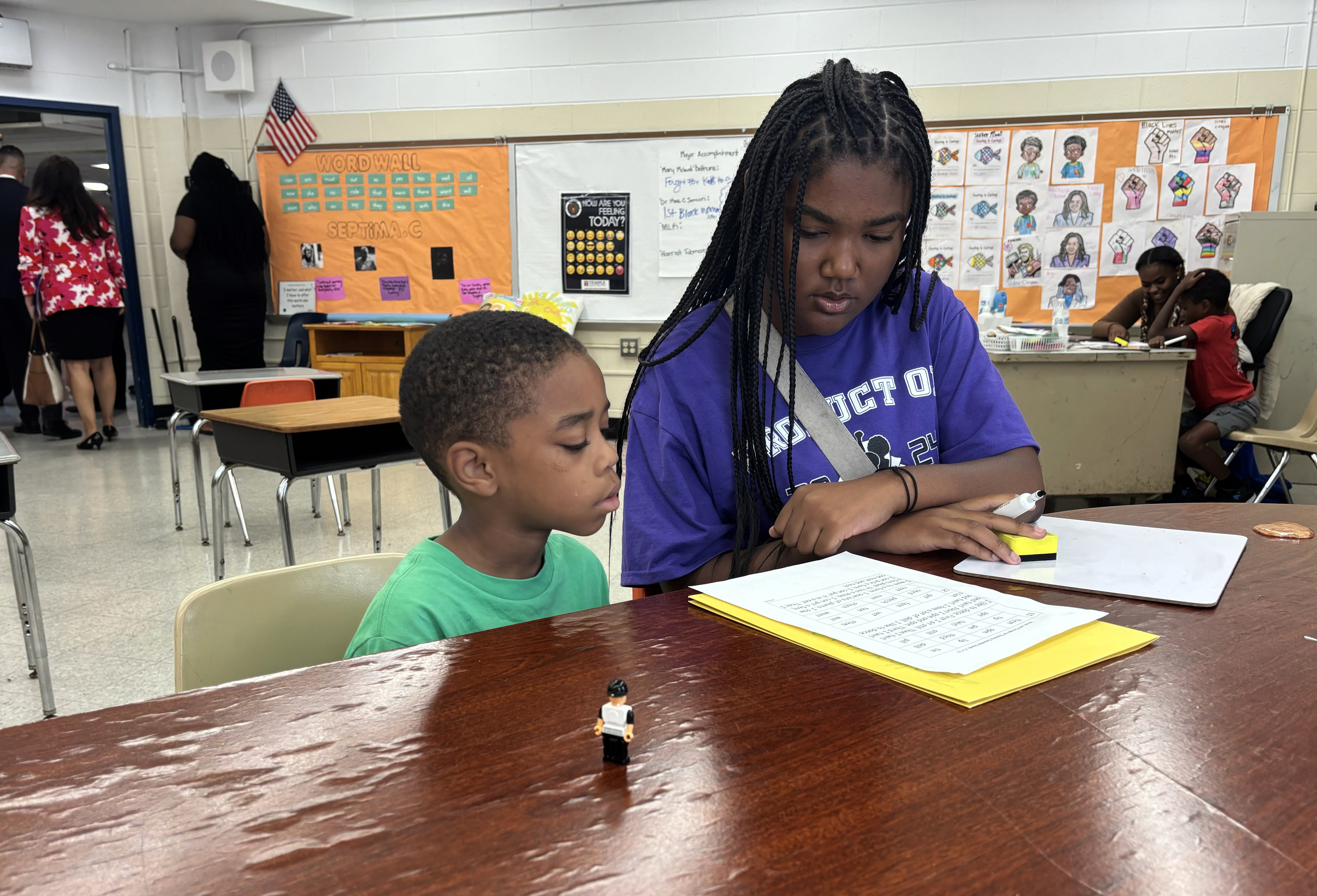
This case concerns the state’s responsibilities under the state Constitution to provide children in the New York City School District with the “opportunity” for a “sound basic education.”
In 1995, the Court of Appeals issued a landmark decision in this case, 86 N.Y. 2d 307 (1995), holding that the Education Article of the state Constitution “requires the State to offer all children the “opportunity” for a “sound basic education.” (CFE, 86 N.Y.2d at 316). The court further held that the state’s failure to fulfill this constitutional mandate would give rise to a judicially cognizable cause of action.
Sustainable Development Goal: Quality Education (SDG 4)
- Ensure inclusive and equitable quality education and promote lifelong learning opportunities for all.
- Provide universal access to quality early childhood development, care, and pre-primary education.
- Substantially increase the number of youth and adults who have relevant skills, including technical and vocational skills, for employment, decent jobs, and entrepreneurship.
- Eliminate gender disparities in education and ensure equal access to all levels of education and vocational training for the vulnerable, including persons with disabilities, indigenous peoples, and children in vulnerable situations.
- Ensure all learners acquire knowledge and skills needed to promote sustainable development, including among others through education for sustainable development and sustainable lifestyles, human rights, gender equality, promotion of a culture of peace and non-violence, global citizenship, and appreciation of cultural diversity and of culture’s contribution to sustainable development.
- Build and upgrade education facilities that are child, disability, and gender sensitive and provide safe, non-violent, inclusive, and effective learning environments for all.
- Substantially increase the supply of qualified teachers, including through international cooperation for teacher training in developing countries, especially least developed countries and small island developing states.
- Increase the number of scholarships available to developing countries for enrollment in higher education, including vocational training and information and communications technology, technical, engineering, and scientific programs, in developed countries and other developing countries.
- Substantially increase the supply of qualified teachers, including through international cooperation for teacher training in developing countries, especially least developed countries and small island developing states.
At trial, the plaintiffs proved and the trial court found that the State was failing to provide New York City school children with the “opportunity” to receive “a sound basic education.” The Appellate Division reversed, however, offering a narrow interpretation of the constitutional right to “a sound basic education.” The Appellate Division decision rested upon the conclusion that the constitutionally mandated opportunity to receive a “sound basic education” should consist of little more than the opportunity to receive an eighth or ninth grade education; that the facilities and resources provided to New York City’s school children were not “so inadequate as to deprive students of the opportunity to acquire the skills that constitute…a sound basic education”; and that the State is not legally responsible for such failure because the appropriate societal “cure lies in eliminating the socio-economic conditions facing certain students.” CFE appealed the Appellate Division’s decision to the Court of Appeals.
The NYCLU submitted an amicus brief, in support of CFE’s appeal, to address each of these fundamental errors committed by the Appellate Division.
On June 26, 2003, the Court of Appeals reversed the Appellate Division’s decision and directed the state to remedy the inadequate education in New York City. The state Legislature failed to arrive at a legislative remedy. Consequently, the trial judge appointed a three-referee panel to consider and recommend a judicial remedy that will address the current unconstitutional conditions in the New York City schools. The NYCLU filed an amicus brief before the panel, and continues to support legislation that would attempt to implement the CFE principles statewide.
Sustainable Development Goal: Reduced Inequalities (SDG 10)
- By 2030, progressively achieve and sustain income growth of the bottom 40 percent of the population at a rate higher than the national average.
- By 2030, empower and promote the social, economic, and political inclusion of all, irrespective of age, sex, disability, race, ethnicity, origin, religion, or economic or other status.
- Ensure equal opportunity and reduce inequalities of outcome, including by eliminating discriminatory laws, policies, and practices and promoting appropriate legislation, policies, and action in this regard.
- Adopt policies, especially fiscal, wage, and social protection policies, and progressively achieve greater equality.
- Improve the regulation and monitoring of global financial markets and institutions and strengthen the implementation of such regulations.
- Ensure enhanced representation and voice for developing countries in decision-making in global international economic and financial institutions in order to deliver more effective, credible, accountable, and legitimate institutions.
State Supreme Court, New York County, Index No. 111070-93 (amicus)
SDGs, Targets, and Indicators
-
SDG 4: Quality Education
- Target 4.1: By 2030, ensure that all girls and boys complete free, equitable, and quality primary and secondary education leading to relevant and effective learning outcomes.
- Indicator 4.1.1: Proportion of children and young people (a) in grades 2/3; (b) at the end of primary; and (c) at the end of lower secondary achieving at least a minimum proficiency level in (i) reading and (ii) mathematics, by sex.
-
SDG 10: Reduced Inequalities
- Target 10.2: By 2030, empower and promote the social, economic, and political inclusion of all, irrespective of age, sex, disability, race, ethnicity, origin, religion, or economic or other status.
- Indicator 10.2.1: Proportion of people living below 50 percent of median income, by sex, age group, and persons with disabilities.
Analysis
The article discusses a case concerning the state’s responsibility to provide children in the New York City School District with a “sound basic education.” Based on the content of the article, the following analysis can be made:
1. Which SDGs are addressed or connected to the issues highlighted in the article?
The issues highlighted in the article are connected to SDG 4: Quality Education and SDG 10: Reduced Inequalities. The article discusses the state’s responsibility to provide children with a sound basic education, which aligns with SDG 4. Additionally, the article mentions the socio-economic conditions facing certain students, indicating a connection to SDG 10, which aims to reduce inequalities.
2. What specific targets under those SDGs can be identified based on the article’s content?
Based on the article’s content, the specific targets that can be identified are:
- Target 4.1: By 2030, ensure that all girls and boys complete free, equitable, and quality primary and secondary education leading to relevant and effective learning outcomes.
- Target 10.2: By 2030, empower and promote the social, economic, and political inclusion of all, irrespective of age, sex, disability, race, ethnicity, origin, religion, or economic or other status.
3. Are there any indicators mentioned or implied in the article that can be used to measure progress towards the identified targets?
The article does not explicitly mention any indicators. However, based on the issues discussed, the following indicators can be used to measure progress towards the identified targets:
- Indicator 4.1.1: Proportion of children and young people achieving at least a minimum proficiency level in reading and mathematics.
- Indicator 10.2.1: Proportion of people living below 50 percent of median income.
SDGs, Targets, and Indicators
| SDGs | Targets | Indicators |
|---|---|---|
| SDG 4: Quality Education | Target 4.1: By 2030, ensure that all girls and boys complete free, equitable, and quality primary and secondary education leading to relevant and effective learning outcomes. | Indicator 4.1.1: Proportion of children and young people (a) in grades 2/3; (b) at the end of primary; and (c) at the end of lower secondary achieving at least a minimum proficiency level in (i) reading and (ii) mathematics, by sex. |
| SDG 10: Reduced Inequalities | Target 10.2: By 2030, empower and promote the social, economic, and political inclusion of all, irrespective of age, sex, disability, race, ethnicity, origin, religion, or economic or other status. | Indicator 10.2.1: Proportion of people living below 50 percent of median income, by sex, age group, and persons with disabilities. |
Copyright: Dive into this article, curated with care by SDG Investors Inc. Our advanced AI technology searches through vast amounts of data to spotlight how we are all moving forward with the Sustainable Development Goals. While we own the rights to this content, we invite you to share it to help spread knowledge and spark action on the SDGs.
Fuente: nyclu.org

Join us, as fellow seekers of change, on a transformative journey at https://sdgtalks.ai/welcome, where you can become a member and actively contribute to shaping a brighter future.






